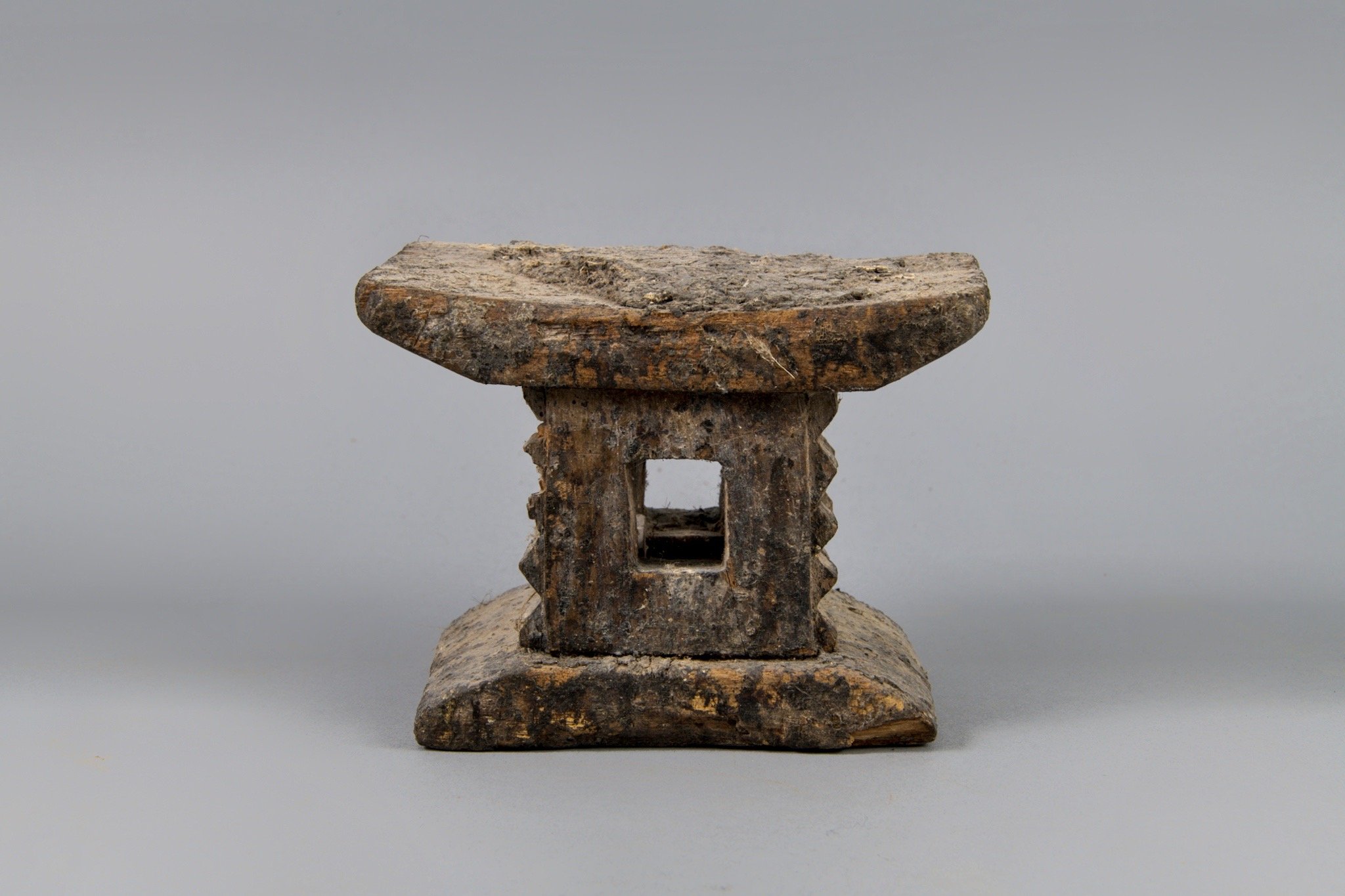
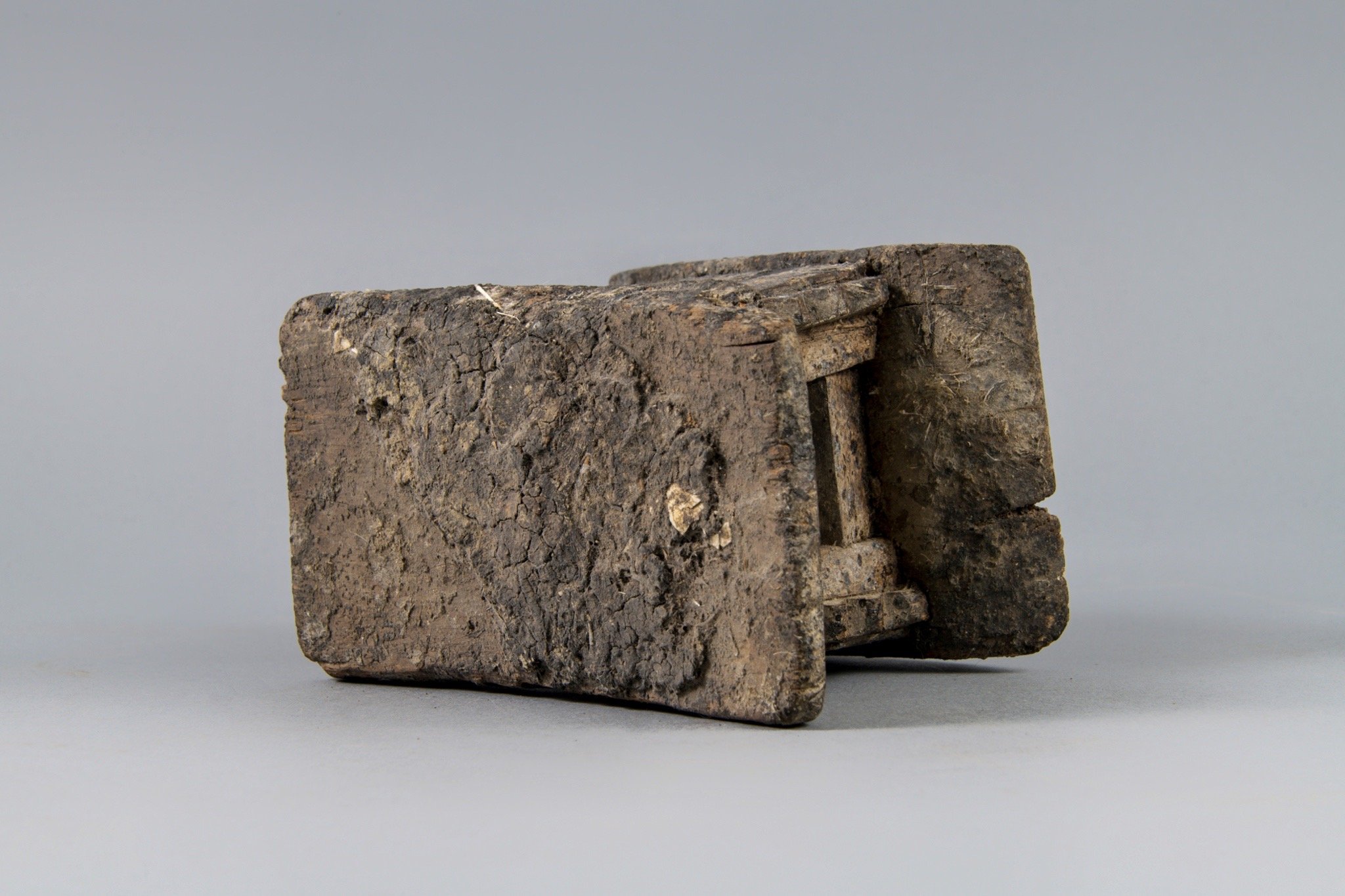
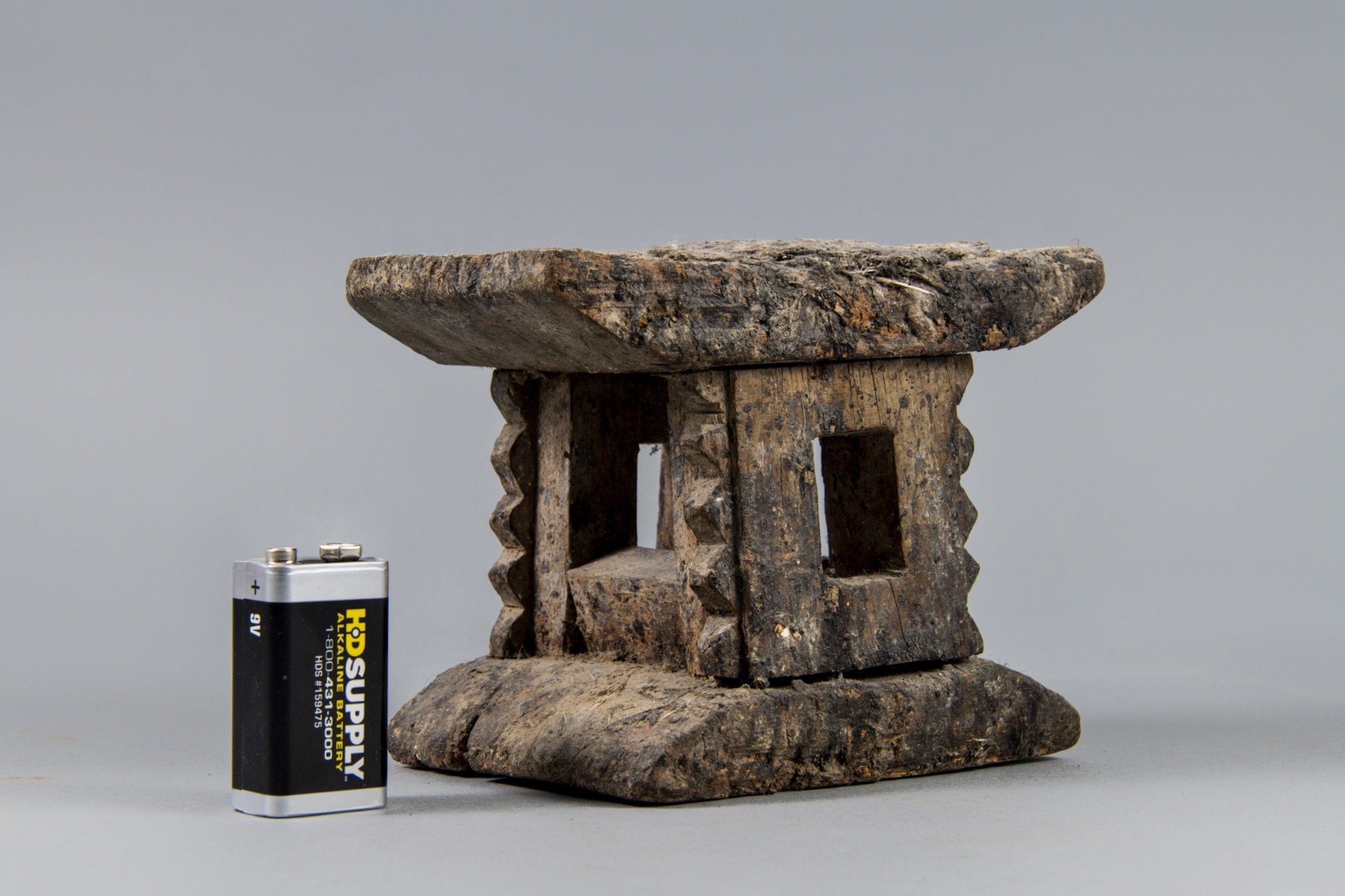
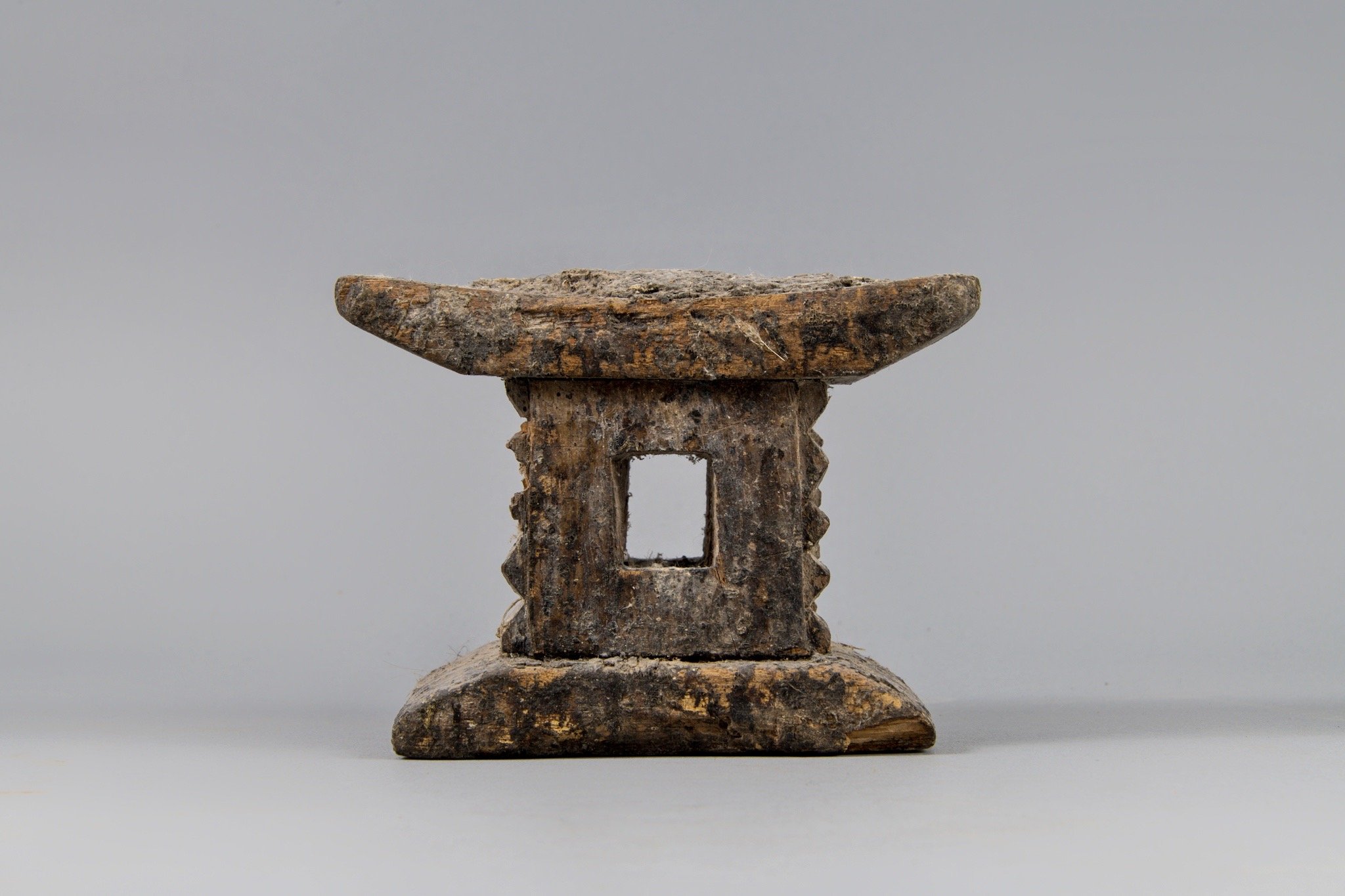
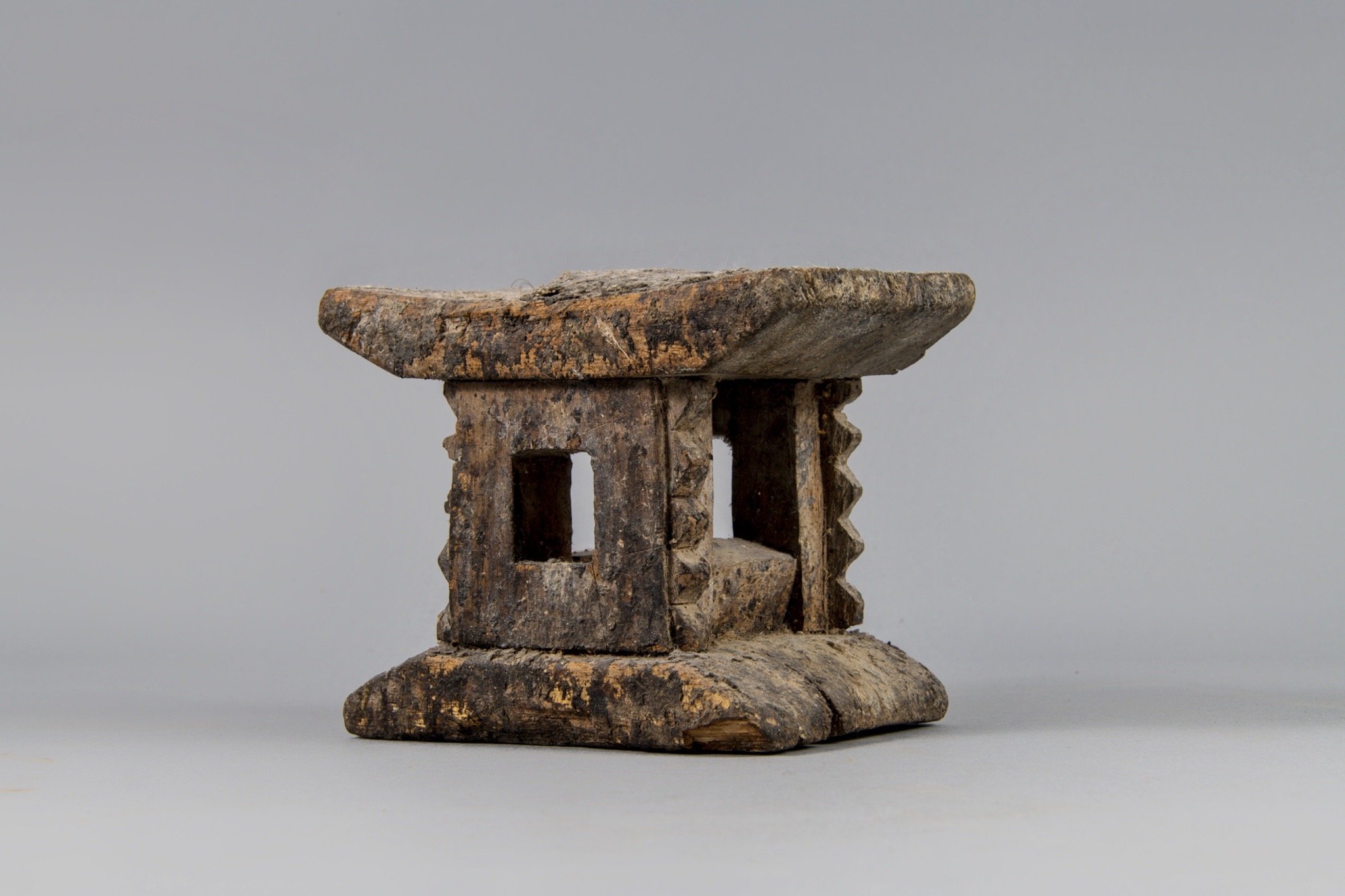
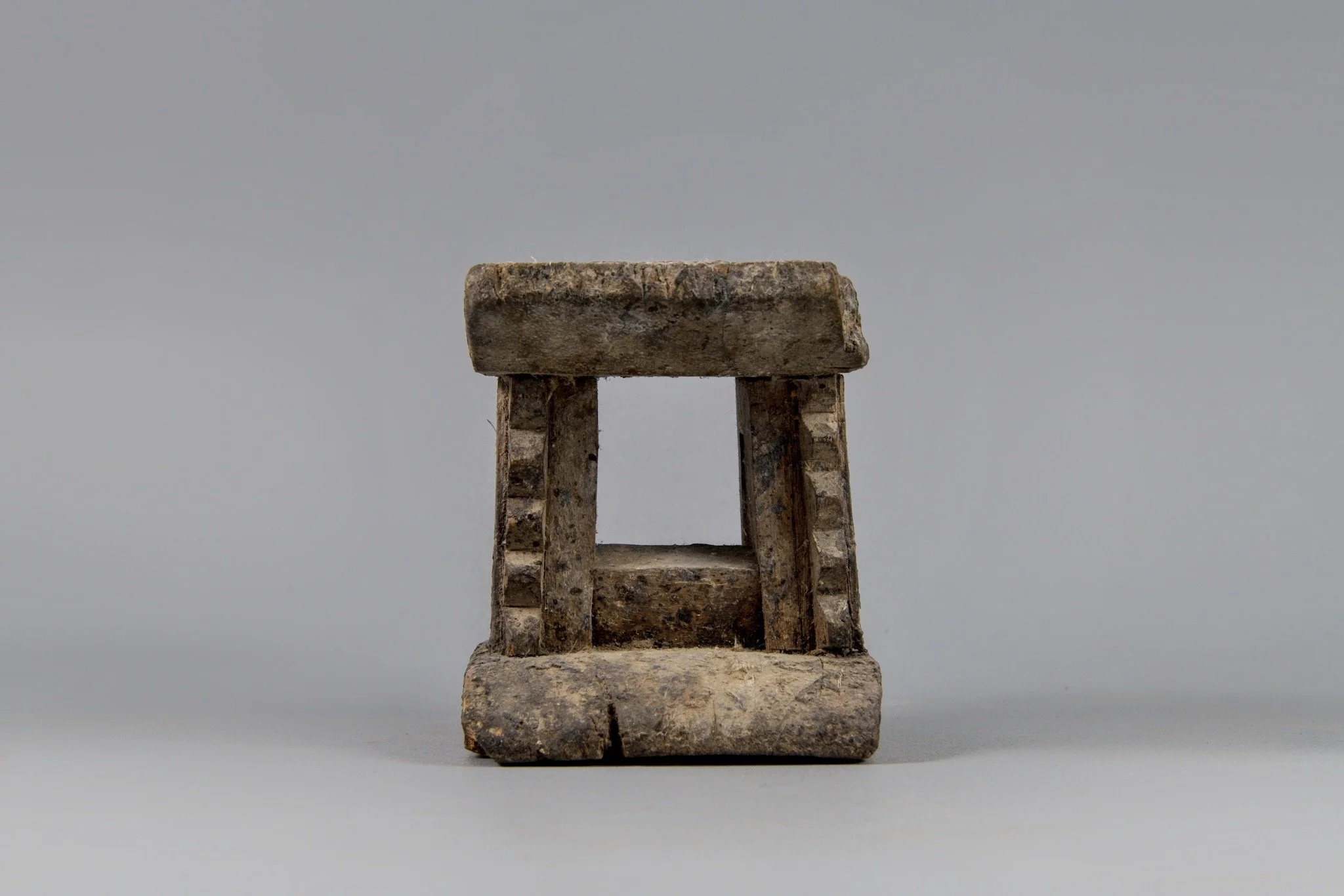
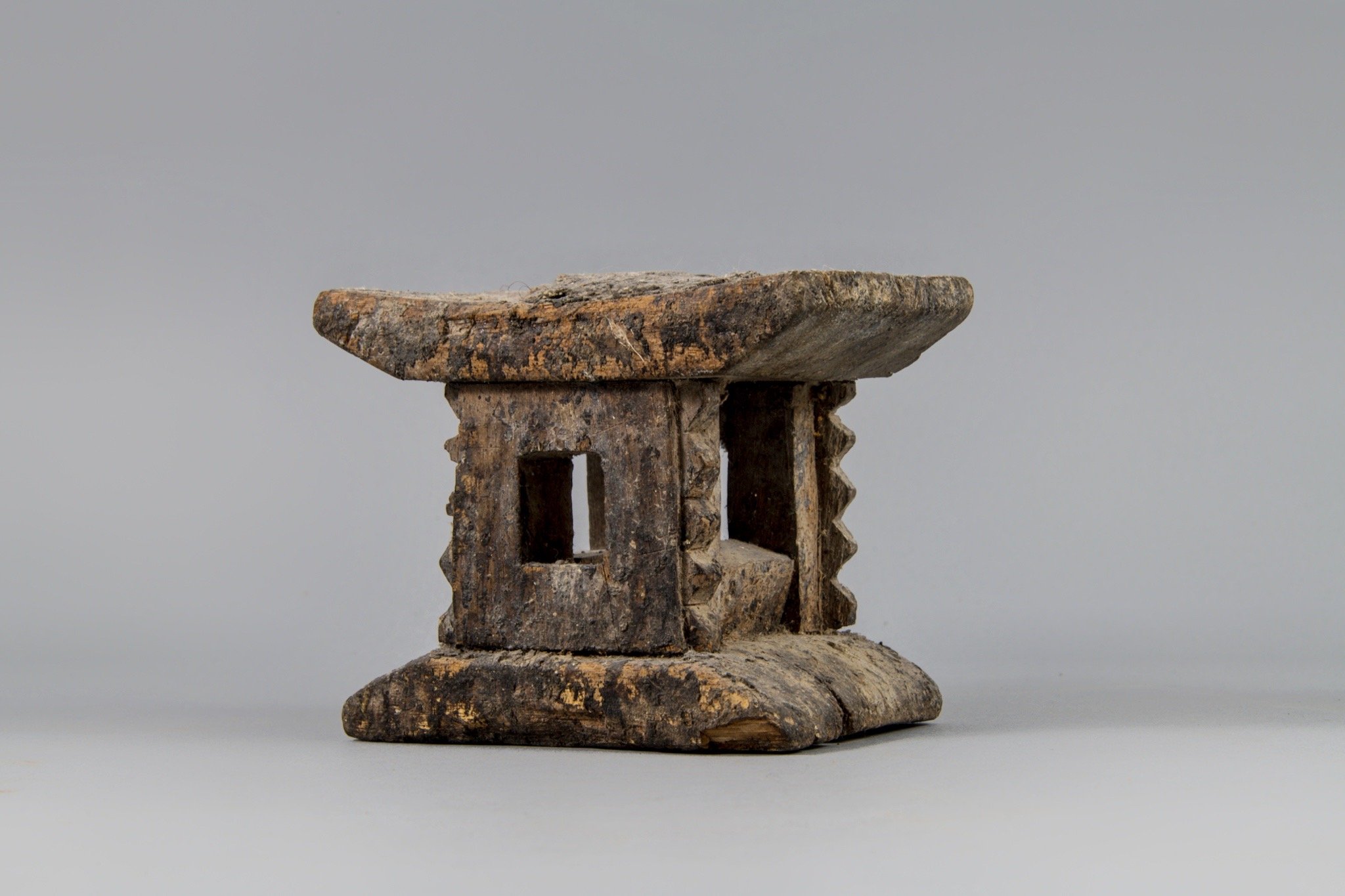

Akan/Ashanti Ancestor’s Shrine Stool, Ghana
5.5” long by 4” tall by 3” deep
wood, soot, blood, feathers, egg shells, libations
late 19th/early 20th century
A small and rare Ashanti ancestor’s stool with a nice shape and surface. As these are uncommon I’ve attempted to provide some background behind them. It’s my belief, but not absolute fact, that this small ancestor’s stool was most likely used in a personal shrine to honor a deceased ancestor. Most of the literature, specifically “The Sacred Stools of Ashanti”, tend to talk about blackened ancestor’s stools for rulers or chiefs which were full-sized stools. I haven’t been able to find much specific literature on these miniature stools, but they carried the same meanings as the larger ones so the information I’m providing applies to them as well.
There are two different types of shrine stools among the Akans of Ghana. One type is white and is generally larger and it serves a spirit. The other type is darker and smaller and is covered in various types of offerings and these stools were placed in a temple of stools or a stool-house serve a deceased ancestor.
The color white is important for it conveys a number of ideas addressing spirituality and the ancestors. Known as 'Hyire', it was in the past made from clay mixed with bird lime that is now replaced by the use of various forms of white powder. Priests and priestesses during rituals associated with their shrine will cover their bodies in white powder to celebrate the spirit of the local shrine and will often throw powder into the crowd or into the air. Stools and often sculpted figures placed in shrines will also be covered with white clay to indicate their spirituality.
The stool being offered is an ancestor's stool which has been 'blackened' to honor the ancestor with a mixture of soot, blood and other dark materials. The Ashantis believe in a world of spirits (asaman) where all their ancestors live in very much the same way as they lived on earth. They designate the ancestral spirits by the word ‘nsamamfoo’ and this “world of spirits” by the terms ‘asaman’ or ‘asamando’. In the case of large stools, the stool on which a chief sat in his lifetime is consecrated by being made black after his death and becomes the shrine for his spirits, which continues to guard his people. White stands for life, happiness and rejoicing. On the other hand, a dark color is used usually as a sign of sadness, pain and bereavement. There are similar, but differing explanations, on why stools are blackened after a person has passed. However, not all stools were blackened after the passing of a chief or a notable person. The blackening of a stool is regarded as the greatest honor that could be bestowed upon a ruler or a notable person and they had to have portrayed exceptional qualities during their lifetime, and they must have also “died a good death” (not one of disease or an accident) in order to receive the honor. Stools of rulers or chiefs were kept in a temple of stools, or a stool-house which was situated in the chief’s house.
The construction of smaller stools was sometimes done to be placed in personal shrines. The description of making the stools black is described as first pouring libations with palm wine on the stool to invoke the blessings of the good dead on such an important function. Then eggs are broken, and, in a calabash or earthenware container mixed with soot collected from the kitchen. The new stool is smeared with the mixture until it becomes black as coal. After this a sheep is killed and its blood sprinkled on the stool. Its fat is carefully collected and put on the stool as well. Then prayers are said for the prosperity of the nation and the stool is placed in its shrine. The use of eggs has a double significance. Eggs are very delicate objects which must be handled with the utmost care. They are used on the stools to show that the survivors must treat the stools with the highest delicacy and carefulness. Secondly, an egg has no bone or any hard material in it. They are described to be “peaceful” and are used to portray the peaceful nature of the stool and those whom it represents. The stool remains as the earthly abode of the ancestral spirit and is honored in various occasions throughout the year.
$750 + shipping
Click/Tap on any image below to bring up the image viewer.
INQUIRE
Please use this form if you have questions, requests for high resolution photos, or would like to inquire about purchasing this object.









